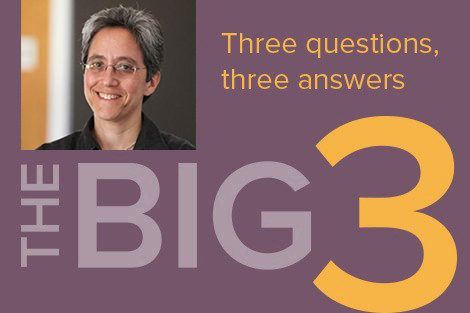June 4, 2020 – The death of George Floyd, an African American man who died on May 25 in Minneapolis after being restrained by a police officer who held his knee on Floyd’s neck for close to nine minutes, has prompted mass protests across the U.S. Nancy Krieger, professor of social epidemiology at Harvard Chan School, discusses how longstanding structural racism has both fueled the unrest and, at the same time, has made COVID-19 particularly lethal for people of color.
Q: What are some of the factors in American society that have contributed to the mass protests we’ve been seeing in the wake of George Floyd’s death?
A: The answer is both immediate—in terms of why seeing, on video, police kill a human being slowly over nine minutes has created the uproar and outrage that of course it should—and also has 500 years’ worth of history behind it. The United States is a country that was built using force, in relation to both settler colonialism and enslavement. There’s a very long history here of people who have been subjugated who are needing to have, demanding to have, and fighting to have their humanity recognized.
It’s not as if concerns about police violence are new. Police forces in the United States were formed in response, for example, to class conflicts in the late 1800s and early 1900s, as employers sought to curb working class protests about low wages and horrific working conditions. Before that there were slavecatcher patrols. There’s a long history of vigilante violence directed against enslaved persons, and also against American Indians, that is built into the way this country was created. It’s critical to acknowledge and understand that history. One can’t go back and fix old harms, but to act as if they don’t exist adds to current insults.
Q: What are your thoughts about the convergence of these protests with the COVID-19 pandemic?
The COVID-19 pandemic, like other prior pandemics, reveals what the social divisions are. We have a common humanity where everyone is at risk of being infected if exposed, but not everyone is equally exposed, and not everyone is equally likely to get sick if exposed, and that has everything to do with current social inequities and the health inequities that they produce.
There have been numerous news commentaries that have suggested that the protests will increase risk of transmission. But the larger issue is that racism is what’s killing black Americans and Americans of color right now, and it’s been doing that long before the coronavirus, SARS-CoV-2, showed up on the scene. And not to have these kinds of demonstrations now isn’t really an option, given what is going on in this country, and given what is needed for pushing forward health equity.
I want to underscore that all the calls for action that I have seen, particularly regarding the demonstrations in Massachusetts, have urged that people do physical distancing, wear masks, bring hand sanitizer, wear gloves, protect each other, protect themselves, and protect their communities. Photographs from demonstrations held over the past few days show that the vast majority of people are wearing masks.
What concerns me more are the people who haven’t had enough access to masks and other personal protective equipment—people like nurses, grocery store workers, and bus drivers. It’s critical to look, for example, at what happened in Chelsea, Lawrence, and other places in the state where there are many people who are essential workers who don’t have adequate sick leave or personal protective equipment and who live in crowded housing. What happens there? These places become hotspots for COVID-19.
Q: What steps can be taken to reduce the inequities that have led to the current crises?
There are two things that are doable in the here and now. One involves helping reduce exposure to the coronavirus among people from communities of color, and among low-income workers, who are not adequately protected now. It’s not just about what happens with medical treatment or contact tracing—it’s about primary prevention, which is the bread and butter of public health.
Another effort involves dealing with issues involving police and criminal justice. There are many thoughtful discussions underway about what it would look like to actually reduce funding for police. There are responsibilities that have been put on the police agenda that are really more in accord with public health and social work—responsibilities such as dealing with opioids or mental health issues—that need to be handled by professionals who are trained to deal with those issues, who also have as a priority protecting people’s lives and health.
It’s important to recognize that there have been serious cutbacks in funding for public health and for other kinds of social services that are very much needed. Instead, there’s been money going to the militarization of police, which is not helpful in terms of having a society in which everyone has a decent opportunity to have a thriving life.
